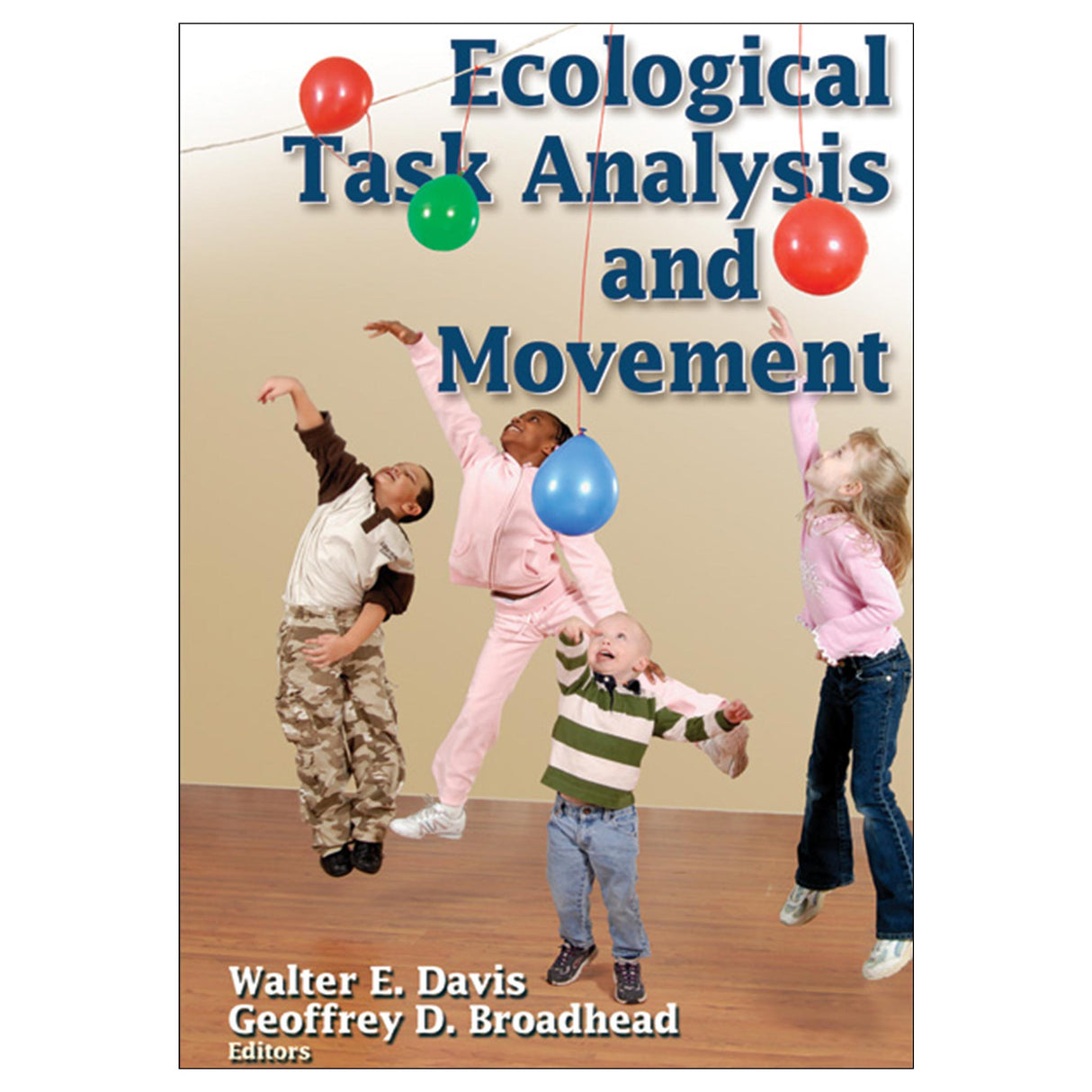Ecological Task Analysis and Movement PDF
$75.00 USD
Access Duration: 10 Years
Researchers, coaches, teachers, and rehabilitation specialists will welcome a new paradigm for incorporating more empowerment and decision-making responsibilities into learning motor skills with Ecological Task Analysis and Movement. This book presents the Ecological Task Analysis (ETA) model, which offers strategies for replacing authoritarian practices by promoting student choice and an empowerment approach to learning. The text not only helps researchers design methodologically sound studies to test ETA principles, but it also shows practitioners how to apply these principles in coaching, teaching, or therapy.
This ground-breaking book honors and advances an approach to understanding human movement developed in the 1990s by Allen Burton and Walter Davis, and this book is dedicated to Burton’s memory. The ETA model is believed to be more efficacious than the categorical approach in special education and adapted physical activity, the teacher-directed approach in physical education, and the prescriptive approach in the therapies—all of which dominate today. Unlike the others, the ETA model provides insight into the dynamics of movement behavior by examining the interacting constraints of performer, environment, and task. It encourages empowerment, which increases students’ intrinsic motivation and self-confidence and improves their performance while decreasing problem behaviors.
In keeping with the ETA belief, there is no one best way to execute a particular motor skill; rather, movement form and outcomes are determined by goals, context, and individual constraints that continually change. To help readers use this knowledge, chapters in the book illustrate how these principles can guide and be tested through research and how practitioners can apply them in physical education and therapy settings. The authors provide real-life examples and scenarios so that practitioners will discover how to implement the ETA model more effectively within various settings. Key points or instructional strategies are also highlighted in a bulleted list at the end of each chapter to help teachers, coaches, and therapists more effectively apply the model to their work.
The theories on which ETA is based have had a revolutionizing impact in biology, psychology, evolution, and human movement science. Ecological Task Analysis and Movement describes that impact and encourages its growth in research, teaching, coaching, rehabilitation, and other settings. This book
•illustrates the strategies for conducting empirical work within the ETA framework;
•provides examples of how researchers and instructors have applied procedures outlined in the ETA applied model to assessment, instruction, and research;
•offers strategies for practitioners to replace authoritarian practices with those that give students and patients decision-making responsibilities; and
•inspires and challenges readers to apply the practice of empowerment to teaching, coaching, and treatment.
Ecological Task Analysis and Movement connects philosophy, theory, research, and practice. It challenges those in the field to understand and apply ETA principles to create more inclusive settings and greater cooperation between groups and individuals within groups. This book encourages readers to understand, discuss and debate, borrow from and fully use, and critique and further develop the ETA model.
Part I. Strengthening the Foundation of Ecological Task Analysis
Geoffrey D. Broadhead, PhD
Chapter 1. Task Constraints and Movement Organization: A Common Language
Karl M. Newell, PhD; and Kimberlee Jordan, PhD
Chapter 2. Functional Role of Variability in Movement Coordination and Disability
Richard E.A. Van Emmerik, PhD
Chapter 3. Conceptualizing Choice as Central to the ETA Applied Model: Broadening the Vision
Walter E. Davis, PhD; and Joyce Strand, PhD
Chapter 4. Perception-Action Judgments in Children With Learning Disabilities
Jill Whitall, PhD; Sarita Sanghvi, MPT; and Nancy Getchell, PhD
Chapter 5. Manipulating a Control Parameter in Overhand Throwing
Dan Southard, PhD
Part II. Enhancing Instruction Using Ecological Task Analysis
Geoffrey D. Broadhead, PhD
Chapter 6. Empowerment in Coaching
Lynn Kidman, PhD; and Walter E. Davis, PhD
Chapter 7. Enhancing Responsible Student Decision Making in Physical Activity
Linda M. Carson, EdD; Sean M. Bulger, EdD; and J. Scott Townsend, EdD
Chapter 8. Ecological Task Analysis in Games Teaching: Tactical Games Model
Steve Mitchell, PhD; and Judy Oslin, PhD
Chapter 9. Systematic Ecological Modification Approach to Skill Acquisition in Adapted Physical Activity
Yeshayahu Hutzler, PhD
Chapter 10. Providing Decision-Making Opportunities for Learners With Disabilities
Jane Taylor, PhD; Donna L. Goodwin, PhD; and Henriëtte Groeneveld, PhD
Chapter 11. Using Ecological Task Analysis in Physiotherapy
Gerald Mullally, MSc; and Mary Mullally, DipPhysio
Chapter 12. Ecological Approach to the Care of Persons With Neurological Disabilities
Adri Vermeer, PhD
Chapter 13. Interface of the KB and ETA Approaches
A.E. Wall, PhD; Greg Reid, PhD; and William J. Harvey, PhD





